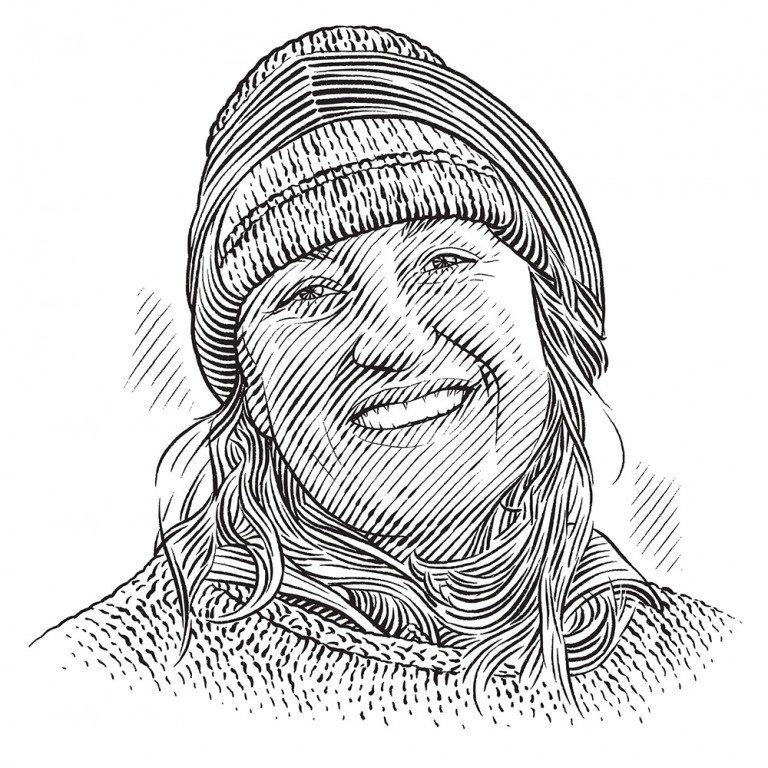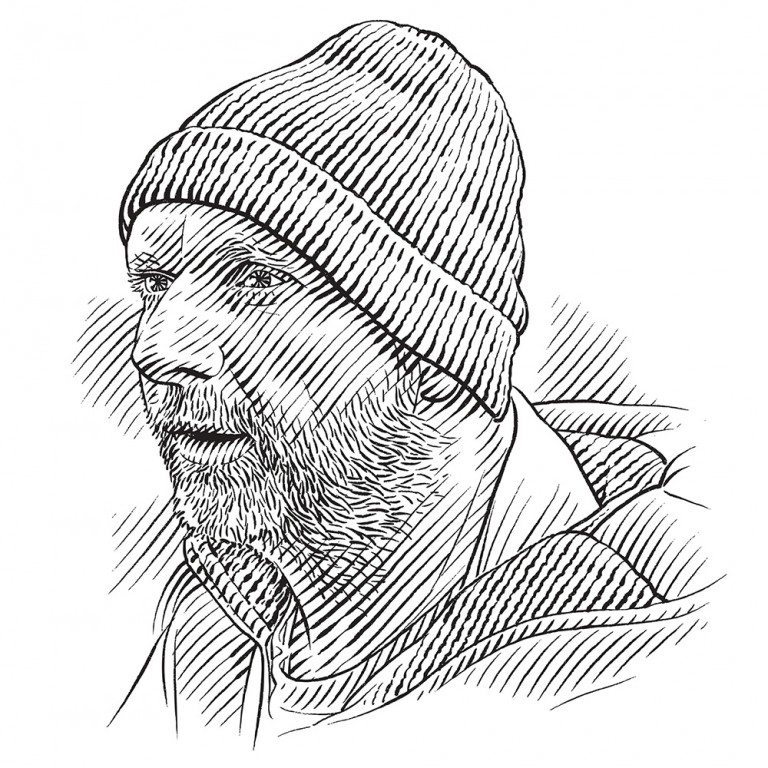The Singing Sea
Hermann puts on headphones to isolate the sounds while we step out onto the observation deck and peer into the darkness. Seconds later we hear the quick blows and tail-slapping of the transient orca pod right in front of us. Even when they’re out of sight, you can feel the presence of a whale.
Photo by Sam Rose Phillips
It’s dark by the time our dinner dishes are cleaned and put away. Not wanting to zip our tents closed quite yet, we stay up in the dimly lit house and play cards, breathing in yet another whale-filled day. Sounds of the calm Canadian Pacific creep in through the wooden cracks of the cabin. Inside, the fire pops in the wood stove, adding percussion to the steady static of the speaker behind me.
Twenty minutes in, a sequence of pings flows out of the speaker. Goosebumps, like it’s the first time I’ve heard that sound. Our laughter stops in its tracks. I look at Hermann. ‘Is that…?’ But he doesn’t have to answer because the four of us are already running in the light of our headlamps through the small patch of forest towards the lab.
In 2001, the Gitga’at First Nations gave Hermann Meuter and Janie Wray permission to build on their land on Gil Island in British Columbia where they founded and built Cetacea Lab. Sixty to 80 feet (18–24 metres) underwater, directly in front of the lab, rests an underwater microphone. A radio transmitter broadcasts all the whale vocalisations that this hydrophone – and a network of nine others – picks up, so that Janie and Hermann can carry out a critical component of their ground-breaking marine mammal research.
Hermann puts on headphones to isolate the sounds while we step out onto the observation deck and peer into the darkness. Seconds later we hear the quick blows and tail-slapping of the transient orca pod right in front of us. Even when they’re out of sight, you can feel the presence of a whale.
Cetacea Lab is deriving so much meaning from such beauty. Day and night, Janie, Hermann and their troop of interns monitor and record humpback and orca vocalisations to learn more about the social bonds, feeding methods and abundance of these whales. With this data, the pair hopes to answer the most essential question: what is so important about this area for whales? They already know part of the answer. Recently dubbed the Great Whale Sea, the area boasts a network of fjords that locals deem to be the quietest segment of ocean on the planet. Whales depend on peaceful waterways to communicate, feed and thrive. Hermann and Janie strive to gather the proof they need to lead the charge to establish the Great Whale Sea as a marine protected area.
Cetacea Lab: A Voice For Whales
Janie and Hermann are working for the protection of Orcas and Humpback Whales in the Great Bear Rainforest by tuning into underwater hydrophones and deciphering the secret language of these majestic animals.

